Are you tired of constantly worrying about your pantry being the target of pesky critters and curious hands? If so, then it may be time to secure the door with a padlock. Not sure how exactly to go about doing this? Don’t worry – we’ve got you covered!
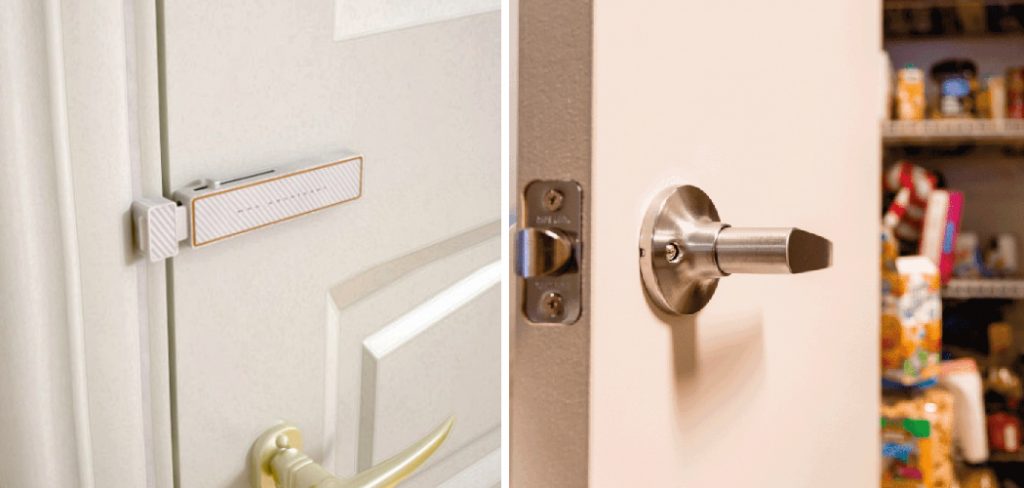
In this blog post on how to lock a pantry door , we’ll show you exactly how to lock up your pantry so that it’s nice and safe from unwanted intruders. So don’t let those pests or kids get one over on you – learn how to lock your pantry door today!
What is a Pantry Door?
Before we get into the nuts and bolts of how to lock a pantry door, let’s take a look at what it actually is. In essence, a pantry door is simply an entranceway to your kitchen storage area. It can be either a hinged or sliding door, and it provides access to all of the food staples you keep in your kitchen.
Because of its importance, it’s important to take the necessary precautions when locking your pantry door. Not only does this make it harder for kids to get in and rummage around, but it also prevents pests from entering your kitchen storage space.
Needed Materials
Given below are the materials that you will require to lock your pantry door:
- A Padlock of Your Preference.
- An Electric Drill (for Doors With Metal Frames).
- A Measuring Tape or Ruler.
- A Power Drill Bit (for Doors With Wood Frames).
- Screws of the Appropriate Size.
- A Phillips Head Screwdriver or Drill Bit.
12 Step by Step Instructions on How to Lock a Pantry Door
Step 1: Measure the Door
Use a measuring tape or ruler to measure the door’s width and height. Make sure that you measure accurately, as this will be important when selecting a padlock and for drilling the holes. If the door’s frame is made of metal, you will also need to measure its thickness. This will help you determine the size of the drill bit to use. It’s important to note that you should measure the door twice to make sure your measurements are accurate.
Step 2: Select a Padlock
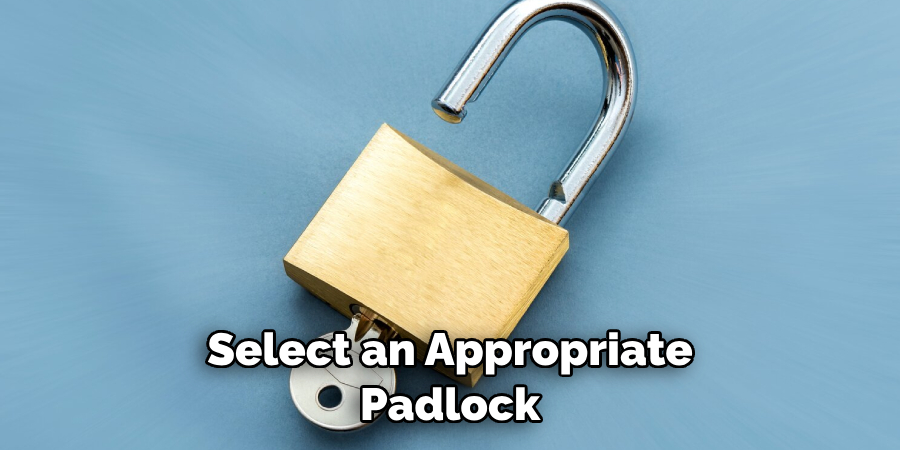
Once you have measured the door, select an appropriate padlock for your pantry door. Take into consideration where and how you want to place it, as well as its overall strength and durability. Make sure that it is large enough to fit the door, but not so large that it obscures the entrance. Otherwise, it won’t be as effective. If you’re unsure of which padlock to get, consult with a professional locksmith. This will ensure that you get the right one for your purposes.
Step 3: Drill the Holes
Using an electric drill or power drill bit (depending on the material of your pantry door’s frame), start drilling holes into both sides of the pantry door. For metal doors, use a larger drill bit than for wood doors.

Make sure that you are drilling the holes at least an inch away from the edge of the door, as this will make it more secure. You may also want to use a drill template if you are unsure of the exact measurements. It’s important to make sure that the holes are deep enough so that the padlock can be securely attached.
Step 4: Attach the Padlock
Once you have drilled the holes into both sides of the door, attach your padlock to one side and then insert the other side through the hole on the other side. Make sure that the padlock is securely attached by fastening the screws tightly. But be careful not to tighten it too much, as this can damage the padlock and make it more difficult to unlock. It’s also important to check that the padlock is facing the correct way and isn’t upside down.
Step 5: Secure the Padlock
Once you have attached your padlock to both sides of the door, secure it in place with a screwdriver or similar tool. Make sure that the screws are tight and that there are no gaps between the door and the padlock. This will ensure that your pantry door is securely locked. You may also want to use a drill template if you are unsure of the exact measurements. This will help you to drill the holes correctly and ensure that your padlock fits properly.
Step 6: Test Out Your Lock
To make sure that your padlock works properly, test it out by trying to open the door from both sides. If it doesn’t budge, then you are good to go! Your pantry door is now securely locked and protected from those pesky intruders. It’s important to make sure that the door is properly locked at all times, as this will help to keep your kitchen storage safe and secure.
Step 7: Installing an Additional Lock
If you want to make sure that your pantry is extra secure, you can also install a secondary lock. This could be a deadbolt or another type of lock, depending on the door material and size. Just remember to measure twice and drill once when installing any additional security features! You may also want to consider adding an alarm system or motion sensors to your pantry door for extra protection.
Step 8: Keeping Your Pantry Organized
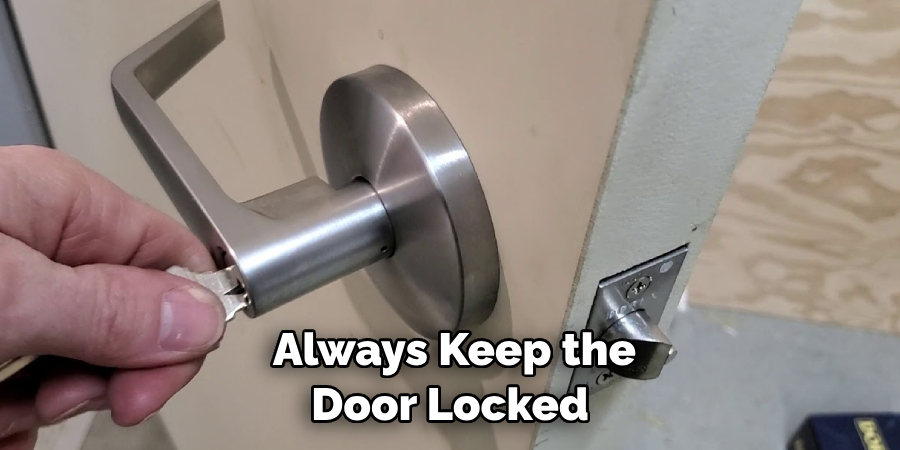
Now that you have successfully secured your pantry door, it’s time to make sure that everything is organized inside. This will not only reduce the need to search for items in a cluttered space but will also help deter any pest infestations. If you want to take it a step further, consider installing shelves or containers to store items in an orderly manner. But remember to always keep the door locked to ensure that no one has access to your pantry without your permission.
Step 9: Adding Decorative Touches
If you want your pantry door to look its best, then why not add some decorative touches? This could include painting the door a bright color, adding a few pieces of artwork, or placing a few plants near the entrance. However, make sure that whatever you do doesn’t interfere with the security of your pantry door. After all, it’s still important to keep it locked at all times!
Step 10: Monitoring Your Pantry Door
Once you have successfully installed your padlock, it’s important to check on it regularly to make sure that it is still secure. Any signs of wear and tear should be addressed immediately so that your pantry door remains safe and secure. You may also want to consider installing a security camera or adding an alarm system to further monitor your pantry door.
Step 11: Keeping Your Pantry Door Clean
Another important step to take when it comes to keeping your pantry door secure is to make sure that the lock and surrounding area are clean. This will prevent dirt and other debris from getting stuck inside, which can impact the performance of the padlock over time. Although it may seem like a small detail, this will help ensure that your pantry door remains secure for years to come.
Step 12: Making Sure Everyone Knows
Finally, make sure that everyone in your home knows where the key is located and how to properly lock and unlock the pantry door. This will ensure that no one has access to it without permission and also serves as an important safety measure. Always make sure that the key is kept in a safe location and out of reach of curious children and pets.
Following these steps on how to lock a pantry door will help ensure that your pantry door is securely locked and that all of your food items are safe from pests and intruders. Now you can rest easy knowing that you have taken the necessary precautions to protect your kitchen storage area!
Tips
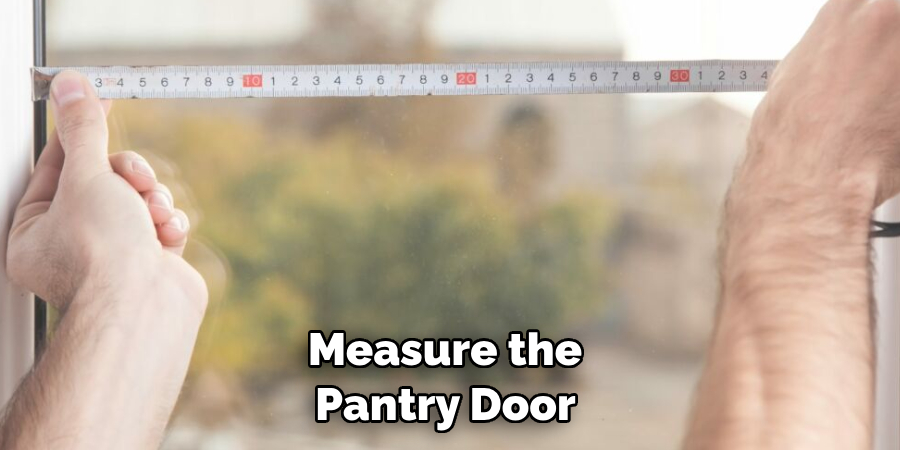
- Make Sure to Measure the Pantry Door Accurately Before Selecting a Padlock.
- Select a Strong and Durable Padlock for Your Pantry Door.
- Test Out the Padlock After You Have Installed It to Make Sure That It is Working Properly.
- Consider Installing an Additional Lock, Such as a Deadbolt, for Extra Security.
- Keep the Lock and Surrounding Area Clean to Prevent Dirt From Getting Inside.
- Make Sure Everyone in Your Home Knows Where the Key is Located and How to Properly Lock and Unlock the Pantry Door.
- Don’t Forget to Add Some Decorative Touches to Your Pantry Door, Such as Plants or Artwork! This Will Make It Look More Inviting and Can Also Help Deter Any Intruders.
Do You Need to Get Help From a Professional?
If you’re having trouble installing the padlock or any other security feature for your pantry door, then it’s best to get some help from a professional. A locksmith can provide expert advice and guidance on how to best secure your pantry, as well as give you tips on selecting the right lock for the job. They can also help with the installation and maintenance of your locks to ensure that your pantry is as secure as possible. Hiring a professional locksmith can also give you peace of mind knowing that the job is being done correctly and securely.
So don’t wait any longer, take the necessary steps today and make sure your pantry door stays locked and secure! With these tips, you’ll be able to protect
Frequently Asked Questions
Q: What Type of Padlock Should I Choose for My Pantry Door?
A: It is important to select a padlock that is strong and durable. Consider the material of your door’s frame, as well as where you plan to place it and its overall security level. Make sure that it is large enough to fit the door, but not so large that it obscures the entrance.
Q: Do I Need to Install an Additional Lock for My Pantry Door?
A: If you want extra security, then installing a secondary lock such as a deadbolt is recommended. Just remember to measure twice and drill once when installing any additional security features!
Q: What Should I Do if The Lock Gets Stuck?
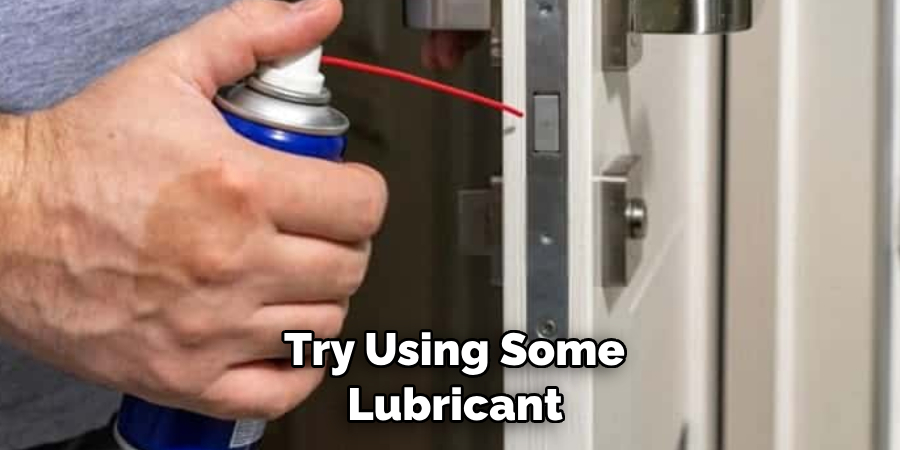
A: If your lock gets stuck, try using some lubricant to help loosen it up. If that doesn’t work, you may need to replace the lock with a newer one. It is also important to check the lock regularly for any signs of wear and tear. Make sure to replace it when needed for optimal security.
Q: Are There Any Other Tips For Securing My Pantry Door?
A: If you want your pantry door to be extra secure, make sure that everyone in the house knows where the key is located and how to properly lock and unlock the door. You should also consider installing a motion sensor light near the pantry entrance, as well as keeping the lock and surrounding area clean to prevent dirt from getting inside.
Conclusion
Overall, if your pantry needs a bit of extra security, following these steps will help you lock your pantry door and keep food safe. By employing the right materials, techniques, and tools you can successfully protect your pantry and the items within it from unauthorized access.
Additionally, if you’re feeling creative you could always customize a personalized locking system of your own by drilling a hole in the pantry door that would allow you to slip one end of the lock shank through while slipping the other end through the hole at the top or side of the door frame.
So now that you’re armed with some useful knowledge on how to lock a pantry door, give it a try and see if it fits your needs. The overall process isn’t overly complicated but can make locking your pantry much more secure than before. So what are you waiting for? Get out those tools and start reinforcing that door today!
About
Safety Fic is a distinguished figure in the world of Diy design, with a decade of expertise creating innovative and sustainable Diy solutions. His professional focus lies in merging traditional craftsmanship with modern manufacturing techniques, fostering designs that are both practical and environmentally conscious. As the author of diy, Safety Fic delves into the art and science of Safety Fic-making, inspiring artisans and industry professionals alike.
Education RMIT University
(Melbourne, Australia) Associate Degree in Design (Safety Fic) Focus on sustainable design, industry-driven projects, and practical craftsmanship. Gained hands-on experience with traditional and digital manufacturing tools, such as CAD and CNC software.
Nottingham Trent University
(United Kingdom) Bachelor’s in diyfastly.com and Product Design (Honors) Specialized in product design with a focus on blending creativity with production techniques. Participated in industry projects, working with companies like John Lewis and Vitsoe to gain real-world insights.
Publications and Impact
In diy, Safety Fic his insights on indoor design processes, materials, and strategies for efficient production. His writing bridges the gap between artisan knowledge and modern industry needs, making it a must-read for both budding designers and seasoned professionals.
